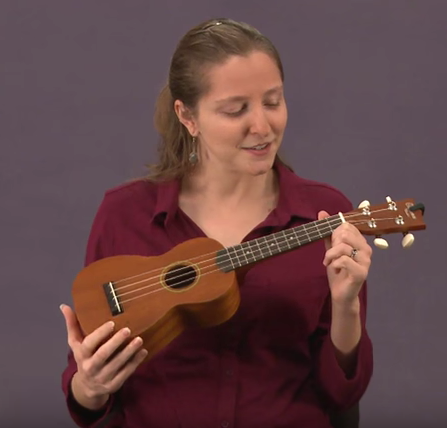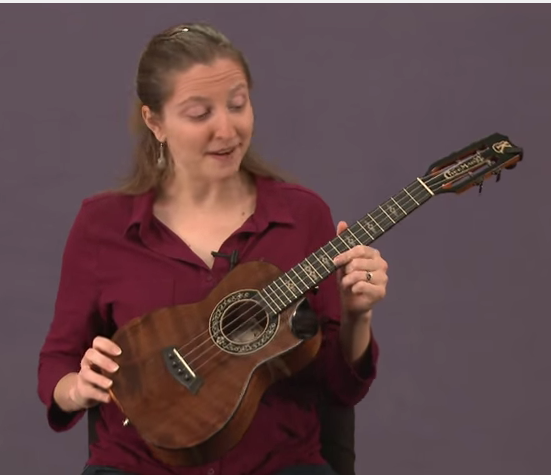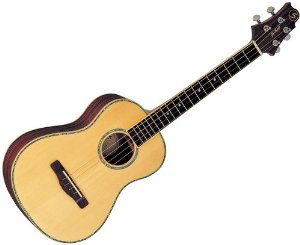Ukulele Tuning & the Different Sizes
Welcome to the wonderful world of ukulele. This tiny instrument has a fascinating history. Although most commonly associated with Hawaii, it was actually first invented in Madeira, a tropical island in the Atlantic southeast near Portugal. It later spread to Hawaii when many Madeirans came there to work in the late 1800s. The name itself comes from the Hawaiian words ‘uku, which means flea, and lele, which means jumping. To the locals, that’s what it looked like when they played: fingers moving like jumping fleas over the strings.
But before you start strumming that uke you better know what you’re doing with ukulele tuning. In this lesson from the Beginner curriculum at ArtistWorks, Sarah Maisel takes you on a tour through ukulele land where you’ll learn about the different sizes as well as what you need to know about tuning ukulele.
Did you know there there are differing ukulele tunings as well as different sizes? As shown in the image below, the soprano ukulele was the original size and the one you would typically associate with that classic old Hawaii sound:

The soprano uke most commonly follows standard ukulele tuning which is: G C E A. Something important to note here is that the top G string is actually higher than the C string below it. This is known as re-entrant tuning, or also “High G on top.”
As Sarah demonstrates in the video, there are a couple different ways to go about ukulele tuning. One method is to use an electronic tuner which can be attached to the instrument. These are very accurate and probably the best way to stay in tune with other uke players.
You can also use your ear for tuning ukulele. Assuming your open A string is in tune you can match it to the 2nd fret of the G string. Then if you play the 5th fret of the E string, this should also match the open A string. Also the 4th fret of the C string should match the open E string.
The next size of ukulele is known as the concert size, which is a little bigger than the soprano size:

It still has that classic sound of the soprano ukulele, and is a nice in between size if you’re looking for a little more room in between your fingers. Another advantage of playing the concert uke size is you can get a bigger sound with its slightly larger body. It also uses standard ukulele tuning of G C E A.
The 3rd size Sarah demonstrates is the tenor ukulele:

As you can see it’s much larger than the soprano and concert sizes. The body is bigger, the neck is longer, and there is a lot more room for your fingers on the fretboard. Also, there’s more frets on the tenor ukulele than the standard 12 on the soprano size. More frets means more notes to play, and so the tenor ukulele is popular amongst many modern ukulele players like Jake Shimabukuro and Aldrine Guerrero. Another benefit to the tenor uke size is its warmer, larger tone due to the larger body - it’s actually more mellow sounding than the smaller sizes.
An alternative ukulele tuning you should know about is the Low G Tuning. This is similar to standard ukulele tuning except you replace the High G with a Low G. Although as Sarah demonstrates in the lesson, the ukulele was not made to withstand the Low G so it does require an adjustment in your playing. She also talks about this in other lessons of the Online Ukulele curriculum at ArtistWorks, so don’t worry about that too much for now.
Another ukulele tuning you may run into (especially in Canada) is the D6 Tuning, which is A D F# B. This ukulele tuning was once very popular in the 1920s and 1930s in mainland America, and a lot of older sheet music for uke will be notated that way.
The last size of these is the baritone ukulele:

As the name indicates, this is the largest in the ukulele family and about the size of a parlor guitar. The baritone does incorporate a different ukulele tuning here: D G B E, which is known as G Major 6 tuning. If you are a guitarist, a lot of the same chord shapes can be used on a baritone uke because it's tuned the same as the top 4 strings of standard guitar tuning.
You may also run into re-entrant baritone tuning which is D G B E, but the D is a High note as opposed to the low note used in the traditional baritone tuning. A couple examples of people who play with this uke tuning are the jazz ukulele players Lyle Ritz and Benny Chong.

Ready to learn ukulele? Click here for free sample lessons!
Related Ukulele Blogs:







Comments